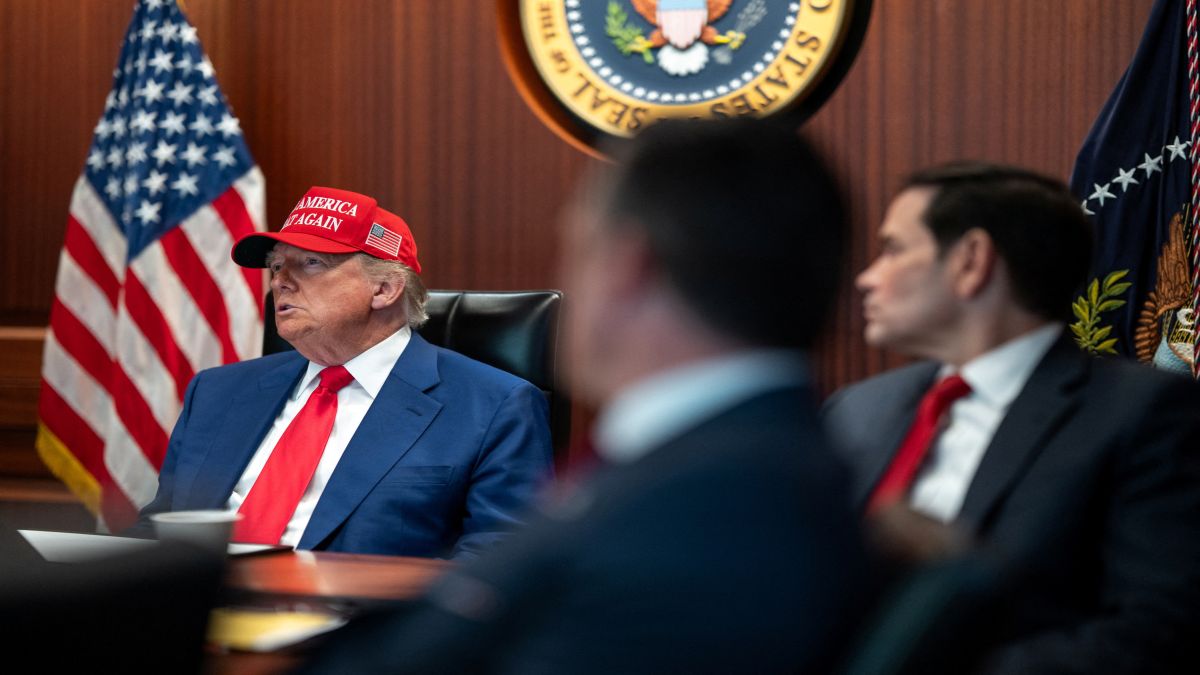For days, US President Donald Trump seemed to be publicly going back and forth on whether or not he was come to bomb Iran.
“You don’t know that I’m going to even do it,” Trump said at the White House. “I may do it. I may not do it. Nobody knows what I’m going to do. I can tell you this: Iran’s got a lot of trouble, and they want to negotiate.”
The White House last week had said Trump would decide whether or not to hit Iran “in two weeks”.
Then, on Sunday, the news that the United States had hit three nuclear sites in Iran emerged.
But how did Trump come to the decision? And what was the scene inside the Situation Room as the bombers flew?
How did Trump come to the decision?
First, let’s take a closer look at the lead up to the attack.
According to those in the know, discussions of a US strike on Iran began in early June. This is when Trump met top national security officials at Camp David. Trump’s advisers had already determined the options to be presented to him months ago.
Read latest updates about America joining Israel-Iran war here.
Trump in recent days seemed to be hedging his bets publicly.
This came amid a split in his base over an attack on Iran – with anti-interventionists on one side and those calling to bomb Iran on the other.
Trump also met Steve Bannon and Charlie Kirk – influential right-wing pundits – to discuss the matter.
“I don’t want to fight either. I’m not looking to fight,” Trump said. “But if it’s a situation between fighting and them having a nuclear weapon, you have to do what you have to do. Maybe we won’t have to fight. Don’t forget: We haven’t been fighting.”
On the other hand, Trump demanded Iran’s unconditional surrender and even publicly spoke about targeting Ayatollah Ali Khameini.
Going into the weekend, Trump continued to maintain the suspense.
“ I have ideas as to what to do, but I haven’t made a final [call],” Trump said at the White House on Friday. “I like to make a final decision one second before it’s due, you know? Because things change, especially with war. Things change with war. It can go from one extreme to the other.”
However, officials said that in private he seemed to become more and more determined to act.
A piece in the Washington Post noted that even though Trump had issued a two-week deadline to Iran, the plan to strike – known as Operation Midnight Hammer – was already in motion.
A senior official told the newspaper Trump’s deadline “was our attempt to throw the Iranians off guard”.
However, Trump in his talks with US officials had been very concerned about the situation not escalating into an allowed war with Iran.
He had met senior officials in the situation room for a briefing every day regarding the planned attack.
Trump decided to go ahead after US officials determined that Iran was not willing to come back to the negotiating table.
US Vice-President JD Vance, who had been among those sceptical of an attack of Iran , decided to support Trump.
By now, a ‘camaraderie’ had taken hold in the team.
The US at this time gave Israel a heads-up that it was going to attack Iran.
A day-and-a-half after Trump’s two week announcement, US aircraft including B-2 bombers were on their way to Iran.
Meanwhile, Trump was at a golf course in New Jersey and Vance was on his way back from California.
Trump reached the White House by the time the bombers entered Iran’s airspace.
Inside the Situation Room
Trump and Vance then went straight into the Situation Room.
They were accompanied by US Defence Secretary Pete Hegseth, Secretary of State Marco Rubio and US Special Envoy to the Middle East Steve Witkoff, White House Chief of Staff Susie Wiles, White House counsel Dave Warrington, CIA Director John Ratcliffe and White House press secretary Karoline Leavitt.
Photos from the Situation Room showed Trump, wearing a red ‘Make America Great Again hat’, watching the strikes with his top advisors.
Trump informed the world of the development on social media only after the US bombers had left Iran’s airspace.
“We have completed our very successful attack on the three Nuclear sites in Iran, including Fordow, Natanz, and Esfahan,” Trump wrote. A “a full payload of bombs was dropped on the primary site, Fordow.”
Officials said no one knows precisely when Trump decided to pull the trigger.
“I don’t know that any of us knew exactly when the President made the decision, except for the President himself,” JD Vance said.
Trump “over time decided this was necessary”, Vance added. “But of course, he had the ability to call off this attack until the very last minute. He obviously decided to proceed.”
Tulsi Gabbard absent
Interestingly, one person who wasn’t present in the Situation Room was Director of National Intelligence Tulsi Gabbard.
Trump in recent days had contradicted Gabbard’s earlier statements on whether Iran was close to developing a nuclear weapon.
Gabbard in the past has been a staunch opponent of US interventionism in West Asia.
“I don’t care what she said, Trump told reporters.
Gabbard earlier this year had testified before US Congress that Iran did not have a nuclear weapon and was not in the process of trying to develop one.
“The IC [Intelligence Community] continues to assess that Iran is not building a nuclear weapon and Supreme Leader Khamanei has not authorized the nuclear weapons program he suspended in 2003,” Gabbard said.
Gabbard in recent days had tried to close the gap between herself and Trump on Iran, claiming the media had taken her remarks out of context. Vance too had come to Gabbard’s defence, issuing a statement calling her a loyal member of the team.
With inputs from agencies


)

)
)
)
)
)
)
)
)



